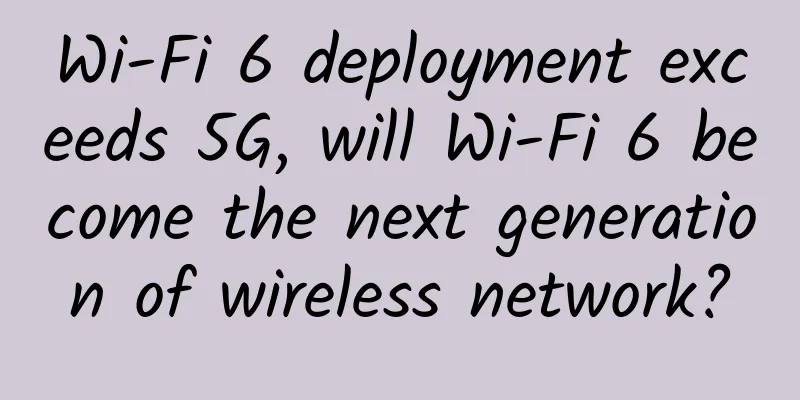How the wireless network market will develop in 2022

|
A wireless network is a computer network that relies on wireless communication and data transfer between network nodes. This networking method is ideal for businesses where devices frequently enter and exit the network. Wireless networks can use a variety of technologies to connect devices, such as cellular, Wi-Fi, and Bluetooth. Learn all about the global wireless networking market below: Wireless Network Market DevelopmentThe Wireless Network Market was valued at approximately USD 57.3 billion in 2020. It is expected to grow at a compound annual growth rate (CAGR) of 12.8% during the analysis period of 2020 to 2027, reaching USD 132.9 billion by the end of the year. While during the same analysis period, the cellular segment of the wireless networking market is expected to maintain a CAGR of 13.7% to reach $49.7 billion by the end of the year. The low-power wide-area network (LPWAN) segment of the market is expected to follow a CAGR of 13% during the analysis period. Regionally, the global wireless network market is segmented as follows:
By industry, the consumer electronics industry is driving the market demand. Other major industries driving demand include:
Wireless network capabilitiesA wireless network describes any device that is not connected by cables or wires. Their capabilities and range vary widely, from covering an entire building to a wide geographic area. A wireless network requires three typical components:
Wireless connections can be established through a variety of communication methods and protocols, from Wi-Fi and Bluetooth to NFC, LTE and satellite services. There are four typical types of wireless networks, classified by size: 1. Wireless LANA wireless local area network (WLAN) is a network of two or more devices, typically used in small offices and homes. WLANs cover a relatively small area, enabling network users to move around within the coverage area without losing network access. 2. Wireless Metropolitan Area NetworkWireless Metropolitan Area Networks (WMANs) are networks with a range of more than 100 meters. They are most commonly used to provide coverage, such as telephone services, to metropolitan areas and residential areas. 3. Wireless Personal Area NetworkWireless personal area networks (WPANs) have limited coverage and connect personal smart devices within a person's home or work area. In a WPAN, instead of a central transmission hub, all devices communicate directly with each other, typically using Bluetooth and ZigBee protocols. 4. Wireless WANWireless Wide Area Networks (WWANs) connect multiple LAN infrastructures, wireless or not, broadcasting signals throughout a building or property. As long as the WWAN is in range, they are able to connect hundreds of portable and fixed devices simultaneously. Custom Wireless Network DesignWireless networks provide freedom and convenience to employees and visitors, especially in companies with high mobility. Since the situation and needs of each enterprise are different, wireless network design needs to adapt to each situation. Otherwise, it may pose a security risk while remaining inefficient and ineffective. Wireless deployments can be challenging, but designing a wireless network architecture that fits your enterprise's specific needs is the best way to minimize difficulties moving forward. “It is important to segregate wireless networks based on user type, such as guests, corporate users, or users using point-of-sale (POS) devices,” said Anshuman Awasthi, a member of the Forbes Technology Council. “Providing wireless connectivity to visitors or customers in retail locations has become a common practice for many businesses. Corporate Wi-Fi is often the most heavily used wireless network in an enterprise. It is important to ensure it is secure, but at the same time easily accessible.” Benefits of Wireless NetworkingWireless networking solutions are widely adopted by companies seeking network efficiency and convenience. These are some of the notable advantages of wireless networks:
Ritesh Mukherjee, member of Forbes Technology Council, said, “5G wireless WAN brings diversity, agility, and flexibility, enabling sites and devices to connect easily. Enterprises should jump on the 5G bandwagon to fully realize the benefits of SD-WAN and SASE for their business. Enterprises can use wireless connections for out-of-band management during outages because if a site requires troubleshooting, OOBM can provide remote access without relying on traditional wired connections.” Wireless Network Use CasesOrganizations in different industries use wireless networking solutions with architectures tailored to their size and needs: 1. Beyersdorf DienstleistungenBeyersdorf Dienstleistungen is a company that provides glass, carpet and furniture cleaning services to businesses. The company is headquartered in Schleswig-Holstein, Germany, and has more than 1,300 employees in six locations across the country. For many years, each branch in Beyersdorf had its own independent IT hardware and infrastructure from a vendor of its choice. While this allowed for more autonomy, it also caused major problems for the IT team. Beyersdorf's IT team gradually unified the company's infrastructure and switches by starting to move hardware from various vendors to Cisco. They switched to Cisco Meraki to roll out wireless LANs to all company branches. “We started a full transformation with Cisco Meraki to roll out wireless LAN to all our branch offices,” said Edward Darkwa, CIO of the company. “From the beginning, things became much easier. We started getting notifications of devices on the network, and it was much easier to track down a switch or access point if they went offline.” By using a wide range of network solutions from Cisco, the company gained more control over its network and improved security. 2. Queen Elizabeth InstituteThe Queen Elizabeth Institute (KEI) is a rehabilitation hospital located in Oostduinkerke, Belgium, providing professional services to more than 1,400 patients every day. There are hundreds of doctors, therapists, and staff who must constantly connect and disconnect medical devices between computers for use. To switch to Wi-Fi-enabled devices, KEI used Juniper Networks. KEI deployed a JuniperMist wireless network with high-performance Wi-Fi 6 throughout the hospital and its surrounding properties, saving time and money. “With Juniper Mist, we can see Wi-Fi issues ourselves rather than waiting for staff to tell us,” said Stefaan Dewul, IT architect at the hospital. “We spend less time troubleshooting, freeing up time for more strategic projects.” 3. Lincoln UniversityLocated in Chester County, Pennsylvania, Lincoln University has more than 46 buildings, 500 faculty and staff, and more than 2,000 students. Caught off guard by the need to move to remote education, Lincoln University was looking to upgrade its infrastructure to a more scalable and stable solution with wider and centralised management. Working with Extreme Networks, the University of Lincoln chose to deploy a wireless network solution, using the Extreme Cloud IQ wireless network management solution and providing Wi-Fi 6 access throughout the campus. Justin McKenzie, Chief Information Officer at Lincoln University said, “The overall experience with Extreme Networks has been outstanding. Couldn’t have asked for more. Once we migrated from our existing high-maintenance on-premises solution to a new infrastructure that can be managed remotely, Extreme Networks made it easier for us to deliver this.” By working with Extreme Networks, the University of Lincoln was able to improve the performance of its Wi-Fi network, increase visibility into the infrastructure, and simplify maintenance and management of the network by adopting Wi-Fi 6. The leading wireless network provider in the marketSome of the leading wireless network solutions and service providers in the market include:
|
<<: The Internet of Things in the 5G Era
Recommend
edgeNAT VPS monthly payment 20% off, annual payment 30% off, US/Hong Kong/Korea VPS monthly payment starts from 48 yuan
edgeNAT has released a regular promotion for this...
ZJI: 520 yuan/month Hong Kong server-2*E5-2630L/32GB/480G SSD/30M bandwidth/2IP
ZJI has released a special promotional dedicated ...
Why do we need a Layer 3 switch? Seven indicators for selecting a Layer 3 switch in a monitoring system
Recently, a friend asked about the application of...
The significance of optimizing the supply chain network design of enterprises
While the concept may seem simple in theory, the ...
The 5G revolution started ten years ago
Will the "Warring States Period" patter...
[6.18]spinservers: $89/month-2*E5-2630Lv3/64GB/1.6TB NVMe/10Gbps bandwidth/Silicon Valley data center
spinservers launched two special-priced dedicated...
SmartHost: AMD Ryzen series 35% off, starting at $2.57/month, Los Angeles/New Jersey/Las Vegas data centers
SmartHost has posted a message on its website say...
Someone finally explains the true value of 5G
Since 2019, the pace of 5G commercialization has ...
"Net Neutrality" Is Making a Comeback, Will the World Be a Better Place?
[[413633]] As part of his plan to promote large-s...
The future of TMT regulation: from telecom operator networks to OTT network effects
Luca Schiavoni, senior analyst for regulatory pol...
DiyVM upgrade KVM, Japan/US/Hong Kong CN2 line 2G memory monthly payment from 50 yuan
I have shared DiyVM many times in my blog. It is ...
Don't call Riverbed just a WAN optimization company anymore. It's become something more.
[51CTO.com original article] Recently, Riverbed l...
How to deliver security as code: 11 tips to get started
Security as code and security by design are hot b...
Analysis of operators' operating data in May: main business data increased across the board, and 5G user development entered a "transformation period"
[[406793]] "Dear user, hello, do you want to...









